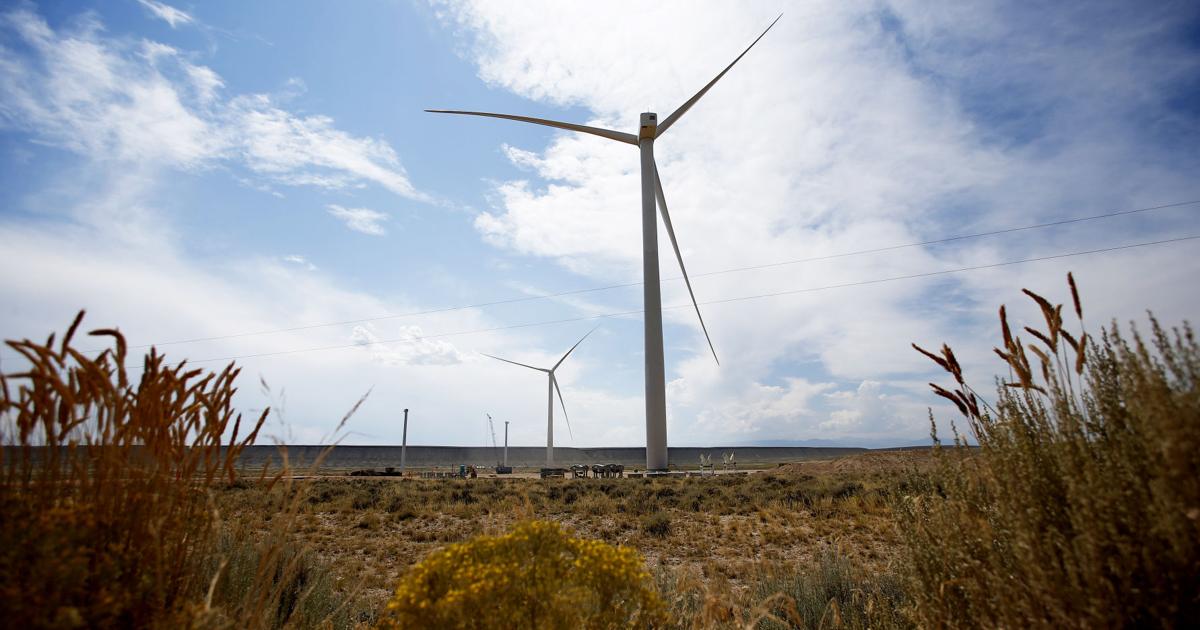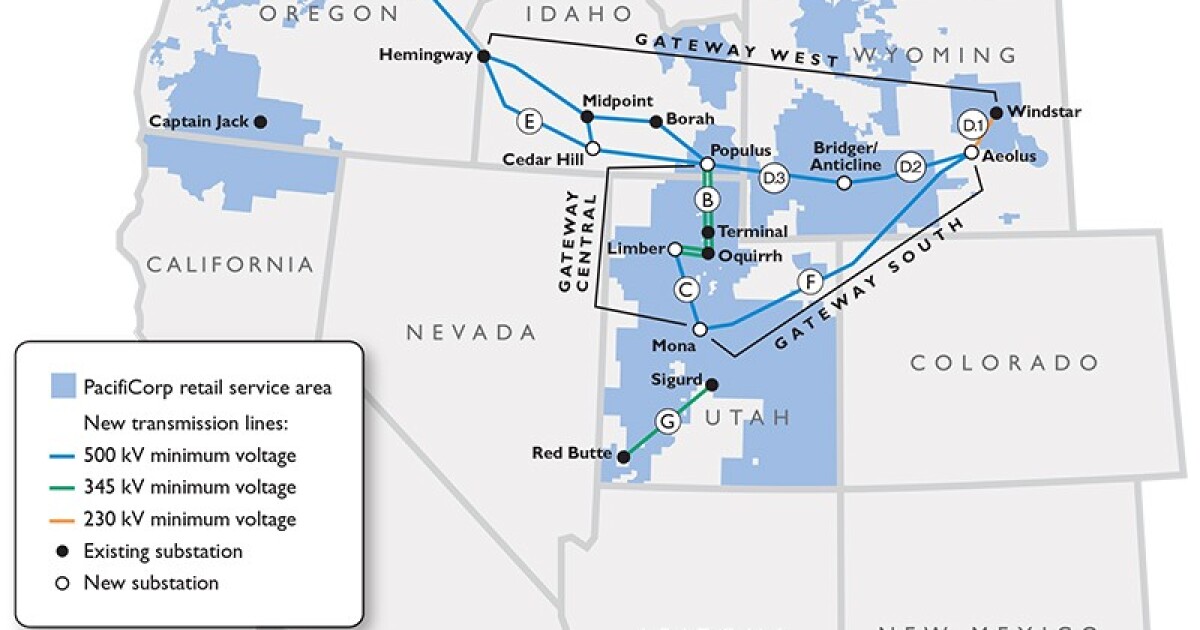I would bet that, that is exactly what gave the investors the idea in the first place
View attachment 182312
That crop right there has more profit potential than a public land grazer will see in 3 seasons.
Follow along with the video below to see how to install our site as a web app on your home screen.
Note: This feature may not be available in some browsers.
I would bet that, that is exactly what gave the investors the idea in the first place
View attachment 182312
My concern about these type of large scale projects is that people will be so enthralled about environmental progress away from fossil fuels that they will disregard any impact to wildlife. I don't know that it's bad, but I don't know if its good either. Look at that footprint, it's huge and I imagine a huge fence around it as well. I hope that someone took wildlife in consideration to provide mitigation efforts to it's potential negative impact.
View attachment 182298
"The committee tabled the bill 11-1. Chair Rep. Derek Skees, R-Kalispell, described himself as a fan of coal, but he was unequivocal in his assessment of the legislation: “This bill does not save Colstrip.”Nothing is dead until they adjourn & leave town, compadre: https://montanafreepress.org/2021/04/23/northwester-bill-revived-by-ankney/
So yes, that - plus the millions n bailout funds NWE is going to suck up, while at the same time, trying to undermine the PSC so they get rubber-stamped on all of their rate increase requests and getting more socialism for the clean up in the coal ash ponds.
"The committee tabled the bill 11-1. Chair Rep. Derek Skees, R-Kalispell, described himself as a fan of coal, but he was unequivocal in his assessment of the legislation: “This bill does not save Colstrip.”
Ankney tried to power up the effort again with an amendment to another bill. House Bill 695 made it onto the Senate agenda in the last week of the session, but the Senate didn’t take a vote on it."
It's DEAD.
By then I will be a resident of Wyoming and won't care if it does.Lol.
It will rise from the grave. Just wait for it.
By then I will be a resident of Wyoming and won't care if it does.
At least they were talking about itI took a class at work about the Endangered Species act and how it affects utility projects.
One of the projects the instructor focused on was a major solar farm in Nevada. I think it was Ivanho but I’m not sure off the top of my head.
The permitted take for desert tortoise was calculated based off surveys that were done when the tortoise was inactive and their numbers in the field were grossly underestimated.
The permitted take was hit just a few weeks into the project. It had to be stopped and the permitted take readjusted. Tortoises were relocated away from the project area whenever possible. As the months went on, they would begin showing back up at their former homes, but the solar farm was fenced off. The ones that didn’t get killed on the highway died pacing the fence line.
The presentation even had pictures of it.
I think these guy's are the parent company of the electric company that serves my Wyoming property. Green Montana made electricity right to my door step.Wyoming's inability to come to terms with a changing national energy profile has a few more problems that you'll get tp pay for once you do.

I think these guy's are the parent company of the electric company that serves my Wyoming property. Green Montana made electricity right to my door step.

Bridger wind farm could be finished by end of year
A large Montana wind farm near Bridger is on track for completion by year’s end.billingsgazette.com
Hippies smoke weed and put solar panels on their roof. I do neither, hippy.Hippy.

How’s the water skiing?The huge solar field just south off 287 on the east side of Amarillo mirages a lake....so we've got that going for us.
*Atlas keeps shrugging...
Depends on how much weed you smoke.How’s the water skiing?

I find it hard to believe that New York City is being fed from a greenhouse. You might need to check your sources,Yup - but it's really less space because food production turn rates and yield is higher under their method - like 27 times less. The company in the report is already feeding NYC. It's also less for food because much of that land isn't for food, its in ethanol production. I think that they only have plans for leafy greens and vining plants though. I haven't seen anything with root vegetables.
from the WWW
Cropland- About 349 million acres in the U.S. are planted for crops. This is the equivalent of about four states the size of Montana. Four crops -- feeder corn (80 million acres), soybeans (75 million acres), alfalfa hay (61 million acres) and wheat (62 million acres) -- make up 80 percent of total crop acreage.
The amount of land used to produce all vegetables in the U.S. is less than 3 million acres.
View attachment 182302
Also need to check your math, corn and soybeans will account for roughly 180 million acres this year in the US alone.Yup - but it's really less space because food production turn rates and yield is higher under their method - like 27 times less. The company in the report is already feeding NYC. It's also less for food because much of that land isn't for food, its in ethanol production. I think that they only have plans for leafy greens and vining plants though. I haven't seen anything with root vegetables.
from the WWW
Cropland- About 349 million acres in the U.S. are planted for crops. This is the equivalent of about four states the size of Montana. Four crops -- feeder corn (80 million acres), soybeans (75 million acres), alfalfa hay (61 million acres) and wheat (62 million acres) -- make up 80 percent of total crop acreage.
The amount of land used to produce all vegetables in the U.S. is less than 3 million acres.
View attachment 182302
Stoop it - that's making too much since!I can see why largescale utilities don't want to deal with millions of potential generation sources versus a few, but between modern advances in engineering, etc I think that small-scale grid, with overarching national grid supply, makes a ton of sense, especially for places like CA that have to so much real eastate to help offset the rolling brownouts already in play. Texas as well. When the storm hit Texas, it wasn't really that they lost capacity to generate, they really and truly managed for the least costly method of preparedness, and that's what killed the power.
If every new construction was required to have renewable capability built in (wiring, supports, etc) rather than push that cost off to a later date, then we would see even more household solar come on line. Just like how houses went to be being designed for electricity or plumbing around the turn of the last century.
I can see why largescale utilities don't want to deal with millions of potential generation sources versus a few, but between modern advances in engineering, etc I think that small-scale grid, with overarching national grid supply, makes a ton of sense, especially for places like CA that have to so much real eastate to help offset the rolling brownouts already in play. Texas as well. When the storm hit Texas, it wasn't really that they lost capacity to generate, they really and truly managed for the least costly method of preparedness, and that's what killed the power.
If every new construction was required to have renewable capability built in (wiring, supports, etc) rather than push that cost off to a later date, then we would see even more household solar come on line. Just like how houses went to be being designed for electricity or plumbing around the turn of the last century.
Well to be honest I thought that, that was a questionable source. There was no math involved as it was cited from the web. Normally, I like to have my stuff squared away, but I was looking that up fast as we were just having fun chatting (spit balling), about ideas of sustainability of green energy, land and water use. Unfortunately, I didn't cite the source properly. So, I looked up USDA crop acreage data report as of Jan 5, 2021 (see site bellow).Also need to check your math, corn and soybeans will account for roughly 180 million acres this year in the US alone.
